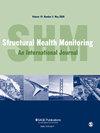一种新的基于transformer的结构状态评估语义分割框架
IF 5.7
2区 工程技术
Q1 ENGINEERING, MULTIDISCIPLINARY
Structural Health Monitoring-An International Journal
Pub Date : 2023-07-08
DOI:10.1177/14759217231182303
引用次数: 0
摘要
传统的结构健康监测(SHM)是通过分析先进传感器获取的数据来评估土建结构的状态。由于需要对专用设备和劳动力进行过度投资,传统的SHM无法大规模使用。另一方面,计算机视觉技术由于其在数据采集和处理方面的固有优势,为SHM提供了经济有效的解决方案。更重要的是,已经证明这些新兴的解决方案可以使用纯图像数据对土木结构产生可靠的状态诊断。本文提出了一种新的基于变压器的神经网络用于基于视觉的结构状态评估,并将其表述为语义分割问题。该网络采用Swin Transformer作为主干,MaskFormer作为整体架构,识别结构的构件(枕木、楼板、柱等)和损伤(混凝土损伤、露筋)。与常用的全卷积网络不同,该模型将语义分割作为掩码分类而不是像素分类问题来处理。为了解决训练数据不足的问题,扩展了一种称为Copy-Paste的图像数据增强方法,并将其应用于训练数据的生成,使得部件分割数据增加了40%左右,损伤分割数据增加了71%左右。在东海道铁路高架桥数据集上的实验验证表明,该方法具有很高的准确率,在构件和损伤分割方面分别达到了97%和90%的平均相交联度,显著优于现有方法。准确的分割结果可以为后续的SHM任务提供有意义的信息。本文章由计算机程序翻译,如有差异,请以英文原文为准。
A novel transformer-based semantic segmentation framework for structural condition assessment
Conventional structural health monitoring (SHM) evaluates the condition of civil structures by analyzing the data acquired by advanced sensors. The requirement of overinvestment in specialized equipment and labor for implementation prevents the traditional SHM from large-scale usage. On the other hand, computer vision techniques offer cost-effective solutions for SHM thanks to its inherent advantage in data acquirement and processing. More importantly, it has been demonstrated that these emerging solutions can produce reliable condition diagnoses for civil structures using pure image data. In this article, a novel transformer-based neural network is proposed for vision-based structural condition assessment which is formulated to a semantic segmentation problem. The network employs Swin Transformer as the backbone and MaskFormer as the overall architecture to recognize components (sleepers, slabs, columns, etc.) and damage (concrete damage, exposed rebar) of structures. Unlike the commonly used fully convolutional networks, the proposed model tackles semantic segmentation as a mask classification rather than a pixel classification problem. To deal with the lack of training data, an image data augmentation method called Copy-Paste is extended and applied for training data generation, resulting in an increase of around 40% data for component segmentation and 71% data for damage segmentation. Experimental validations on the Tokaido railway viaduct dataset show that the proposed approach is very accurate, achieving 97% and 90% mean Intersection Over Union for component and damage segmentation, outperforming the existing methods by a significant margin. The accurate segmentation results can provide meaningful information for downstream SHM tasks.
求助全文
通过发布文献求助,成功后即可免费获取论文全文。
去求助
来源期刊
CiteScore
12.80
自引率
12.10%
发文量
181
审稿时长
4.8 months
期刊介绍:
Structural Health Monitoring is an international peer reviewed journal that publishes the highest quality original research that contain theoretical, analytical, and experimental investigations that advance the body of knowledge and its application in the discipline of structural health monitoring.

 求助内容:
求助内容: 应助结果提醒方式:
应助结果提醒方式:


